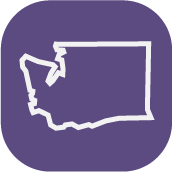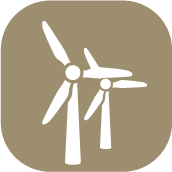UW Bothell Fast Facts 2024-25
Return on Investment
Debt Free
In 2023-24, 72% of undergraduate students and 69% of graduate students graduated debt-free.
Source: Office of Financial Aid & Scholarships
Highest Wages in WA
UW Bothell alumni with bachelor’s and master’s degrees consistently earn the highest wages in the state among graduates of public, four-year universities.
Source: Educational Research & Data Center (November 2024)
Best Value
PayScale ranked UW Bothell No. 1 on its 2024 list of Best Value Colleges in the state of Washington.
Source: PayScale (2024)
Enrollment
6,064 Total
5,732 FTE*
*FTE = Full Time Equivalent
Undergraduate
5,478 (5,216 FTE*)
Graduate
586 (516 FTE*)
- 33% First Year & Pre-Major Programs
- 17% School of Business
- 3% School of Educational Studies
- 15% School of Interdisciplinary Arts & Sciences
- 7% School of Nursing & Health Studies
- 25% School of Science, Technology, Engineering & Mathematics
- <1% Academic Affairs
In autumn 2024, the average class sizes were
32
Undergraduate
19
Graduate
Access and Opportunity

In autumn 2024, 31% of incoming first-year students and 43% of new incoming transfers would be first in their immediate families to earn a four-year degree.

32% of incoming first-year students and 38% of new incoming transfer students are eligible for federal Pell Grants.

6% of students at UW Bothell are veterans or military-benefits eligible.

95% of incoming first-year students and 88% of incoming transfer students in autumn 2024 come from Washington state.
Top Counties of Residence
27%
Snohomish
59%
King
Top Five Cities of Residence
11% Seattle
9% Bothell
7% Lynnwood
7% Bellevue
6% Everett
Student Diversity
- < 1% American Native or Alaska Native
- 34% Asian
- 10% Black or African American
- 10% Hispanic or Latino
- 5% International (student visa)
- < 1% Native Hawaiian or Pacific Islander
- 6% Two or more races
- 28% White
- 6% Not indicated
Community Engagement
In 2020, UW Bothell was recognized for aligning with Carnegie Foundation standards for community engagement. Each year, students collaborate with hundreds of community partners — businesses, nonprofit organizations and government agencies — on projects that enrich their education while supporting partner goals.
Source: UW Bothell Division of Advancement
Research Excellence

In 2025, UW Bothell was designated a “Research College and University” by the Carnegie Foundation for the Advancement of Teaching. The classification recognizes the faculty’s expanding research — nearly $80 million in expenditures over the past decade — which emphasizes collaboration, innovation and impact across the Puget Sound region.
State Impact
9 out of 10
UW Bothell alumni live and work in the state of Washington, contributing to the dynamic economy and investing in their community.
$394.2 million
total impact to the state of Washington
Source: University of Washington 2024 Economic Impact Report
Faculty & Staff
Faculty
346 Headcount
Staff
396 Headcount
Source: Office of Organizational Excellence & Human Resources
Environmental Sustainability

As part of the Puget Sound Energy Green Direct program, UW Bothell purchases 100% of its electricity from the Lund Hill Solar project and the Skookumchuck Wind Project.

The campus houses a 58-acre wetland that is a sustainable, functioning floodplain ecosystem within an urbanizing watershed.

The campus uses no pesticides and is home to a host of native plants, pollinators, salmon, beavers and other wildlife.
Source: Division of Planning & Administration
Our Schools
Want to learn more about our five schools? You can visit their websites or view and download the school snapshots below.
- School of Business website | School of Business snapshot (PDF)
- School of Educational Studies website | School of Educational Studies snapshot (PDF)
- School of Interdisciplinary Arts & Sciences website | School of Interdisciplinary Arts & Sciences snapshot (PDF)
- School of Nursing & Health Studies website | School of Nursing & Health Studies snapshot (PDF)
- School of Science, Technology, Engineering & Mathematics website | School of Science, Technology, Engineering & Mathematics snapshot (PDF)
All data was provided by UW Bothell’s Office of Institutional Research unless otherwise indicated.
Fast Facts are updated annually shortly after 10th-day enrollment statistics are finalized.